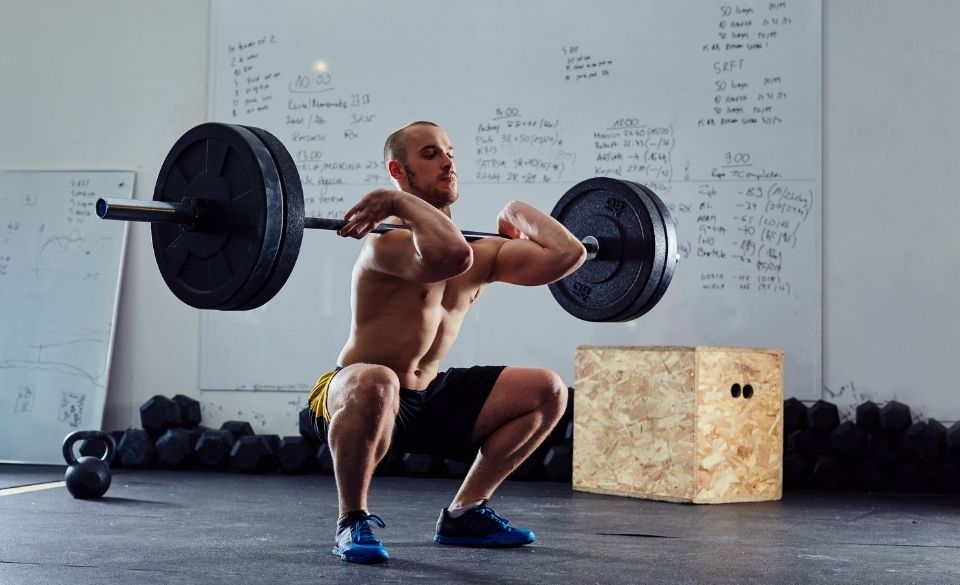
Best Muscle Group Combinations To Workout Together
Page Contents
Even though many people think that working out involves running or cycling, they only strengthen your cardiovascular system and specific muscle groups, that’s why you should also consider combing a strength training plan with your cardio plan.
A strength training plan should include strength exercises, balance, and flexibility training. Strength exercises will help improve the condition of your bones, muscles, and connective tissues, and flexibility training will help aid in mobility and keep your muscles supple. It will also help improve posture when the two are combined. With that in mind, the Department of Health and Human Services recommends that everyone should include strength training at least twice per week.
While there are many ways to structure a strength training plan, many people find it easier to focus on multiple muscle groups in a workout as it reduces the time needed in the gym. It can also help increase the rate at which you lose weight.
However, to do this correctly, you will need to know what muscle groups you can combine in the same workout.
If this is done correctly, it will allow your muscles more time to rest between workouts and help prevent overtraining.
In this article, we are going to show you the best muscle groups to combine in a workout and some basic examples of a weekly schedule.
Muscle Groups
To understand muscle groups, you first need to know the three types of muscles in the body. These are
– Cardiac
– Smooth
– Skeletal
The cardiac muscle is the heart muscle or myocardium which controls your heart. Smooth muscles help move food through the digestive tract and control involuntary functions such as your blood vessels. The skeletal muscles are the muscles you are working in the gym and help your body move and makeup around 40 percent of your body weight.
When it comes to strength training, Personal trainers and fitness experts consider the chest, back, arms, abdominals, legs, and shoulders the most important muscles to strengthen.
Because of this, many people divide these muscle groups into categories. This makes it easier to combine them into a workout.
– Calves (legs)
– Hamstrings (legs)
– Quadriceps (legs)
– Glutes and Hips
– Biceps (arms)
– Triceps (arms)
– Forearms (arms)
– Trapezius (shoulders)
– Latissimus Dorsi (Lats)
Working Multiple Muscles
Before you think you need to move away from single muscle group exercises, don’t. Many of these exercises, for example, the bicep curl, work other muscles, including the brachialis and brachioradialis, which help your elbow flex. It also engages your shoulder and core muscles, which help you lift the weight efficiently.
So before your start thinking about finding exercises that fit into more than one category, look at some of the ones you are currently doing, as the more joints you move, the more muscle groups you will be using.
Best Muscle Group Combinations To Workout Together
There are no best muscle group combinations to work out together. As everyone is different, you may want to experiment with a few different combinations until you find the right balance.
If you are a beginner and starting a strength training plan, you are better to follow a program that balances all the different muscle groups. However, if you are training for a sport like running, cycling, or rowing, you will benefit from focusing on muscle groups used when performing that sport.
If you are more experienced in working out at the gym or have limited time, you might find it helpful to pair muscle groups together. For example, shoulders and arms when using the rowing machine or a squat which works the legs and glutes.
However, when you combine multiple muscle groups into one workout, you will need to split the days apart. For example, here is one way you could combine your muscle groups if you work out three times per week:
Three days a week:
Monday: chest and shoulders
Wednesday: legs
Friday: back, abdominals, and arms
Two days a week:
If you only have two days per week to train, you can combine muscle groups into two sessions per week. For example:
Monday: chest, arms, and shoulders.
Thursday: legs, back, and abdominals.
If you are a more experienced gym enthusiast and have a background in lifting weights regularly, you can be a little more specific on the muscles you target. For example:
Monday: chest, shoulders, triceps and forearms.
Wednesday: calves, hamstrings, quadriceps, and glutes.
Saturday: biceps, back, abdominals, traps and lats.
However, there are some exercises you don’t need to separate as these work multiple muscle groups in our list, for example, the squat, as this works the hamstring, quadriceps, glutes, back, and abdominal muscles altogether.
By splitting the main muscle groups into different days, you will be able to provide more rest for each muscle group. This will allow enough time for the muscles to recover and build stronger and more resilient muscles in the future.
Making A Workout Schedule to combine Muscle Groups
The American heart association recommends two days between each strength session, as this gives the muscles enough time to fully recover.
Below is an example of how you would combine muscle groups into one workout with adequate recovery
Monday: Monday’s workout focuses on the legs.
barbell squats: 3 sets of 8-10 repetitions
dumbbell lunges: 2 sets of 8-10 repetitions
Deadlifts: 3 sets of 8-10 repetitions
step-ups: 2 sets of 10-12 repetitions
calve raises: 3 sets of 10-12 repetitions
Wednesday: Wednesday’s workout focuses on the arms and shoulders
push-ups: 3 sets of 8-10 repetitions
biceps curls: 3 sets of 8-10 repetitions
shoulder press: 3 sets of 10-12 repetitions
bench dips: 2 sets of 10-12 repetitions
lateral raises: 3 sets of 8-10 repetitions
Friday: Friday’s workout focuses on the back, chest, and abdominal muscles
dumbbell bench press: 2-3 sets of 8-10 repetitions
dumbbell fly: 2-3 sets of 8-10 repetitions
bicycle crunches: 2-3 sets of 20 repetitions
one-arm dumbbell rows: 2-3 sets of 8-10 repetitions
dumbbell bent-over rows: 2-3 sets of 8-10 repetitions
crunches: 3 sets of 20 repetitions
Since everyone is different, try to test different combinations and recovery time. That way, you will learn more about how the body reacts and what will need to be adjusted. However, make sure you have atleast one day (ideally two) between each weight training session, unless you are an experienced lifter.



